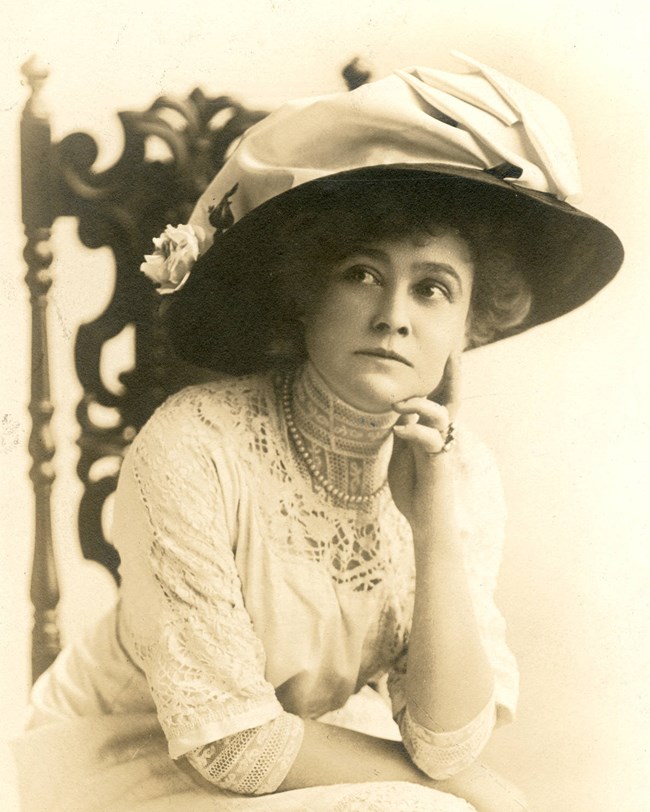Last updated: January 7, 2022
Article
Minnie Dupree: Broadway star for half a century, buried at St. Paul's

Born in 1873, Minnie first appeared in a play in San Francisco at age 14. In 1888, she debuted on the New York stage in Held by the Enemy. To accommodate her daughter’s career, Eleanora DuPree moved to Mt. Vernon, a short ride on the New Haven rail line to the Broadway theatres. They purchased a home at 228 S. 6th Avenue when Mt. Vernon was still a village. Eleanora died at age 51 in 1894, and was buried in the cemetery at St. Paul’s Church. Following her mother’s death, Minnie, described in a gossip column of the day as a “handsome blonde, and the possessor of a magnificent head of curly hair,” moved to New York City.
She planned to leave the theatrical life in 1896, accepting a splendid diamond engagement ring from a recently divorced, multi-millionaire cotton mill owner named William H. Langley, who was in his 40s. But for some undetermined reason they never married, although the two remained close friends, and Langley left Minnie $25,000 when he died in 1919.
Minnie’s acting career continued and it encompassed an impressive array of comedies and dramas over nearly 60 years, hardly missing a year at the theatre. This included several critically acclaimed seasons performing on the London stage. She was the consummate working actress, usually appearing in starring roles but also accepting supporting parts as necessary to maintain her livelihood. Her most successful New York roles were as Mathilda in the 1922 rendition of The Old Soak and as Martha Brewster in the smash comedy hit, Arsenic and Old Lace that ran for a remarkable 1,444 performances from 1941-44.
During World War I, Minnie studied nursing and worked on the home front with the American Red Cross, confronting but apparently not contracting the deadly Spanish flu. During the Great Depression, she helped organize the Stage Relief Fund to assist unemployed actors and actresses. Yet, ironically, like many in the theatrical profession, she too fell into poverty and worked briefly for the Federal Theatre project, one of the New Deal agencies created to lift the country out of the economic morass.
Her film credits were few, but she had a memorable role as an old woman who reformed a family of swindlers in the 1938 production of The Young at Heart, starring alongside Hollywood icons Janet Gaynor and Douglas Fairbanks, Jr. A review in The New York Times noted: “With all due respect to the names in the cast, the picture is stolen by Minnie DuPree as the aged lady who adopts the Carleton tribe when they are down to their last railroad ticket to London. In every one of her scenes, and they are the backbone of the picture, Miss DuPree gives a heart-breaking love performance.”
Minnie occasionally visited her mother’s grave at St. Paul’s, and more often in the 1930s and 40s, when the church rector was Rev. Harold T. Weigle, a friend of the actress. Rev. Weigle had previously served at “The Little Church Around the Corner,” an Episcopal Church in the Chelsea section of Manhattan, where Minnie worshipped. Minnie, who never married, was on the stage until three months before her death, last appearing in Land’s End on Broadway in 1947. She died on May 23, 1947, and was interred in the family plot at the rear of the St. Paul’s cemetery. Her grave, like those of her mother and brother, is marked by an orange granite gravestone, which reads, “Dearly Beloved Minnie DuPree.”
